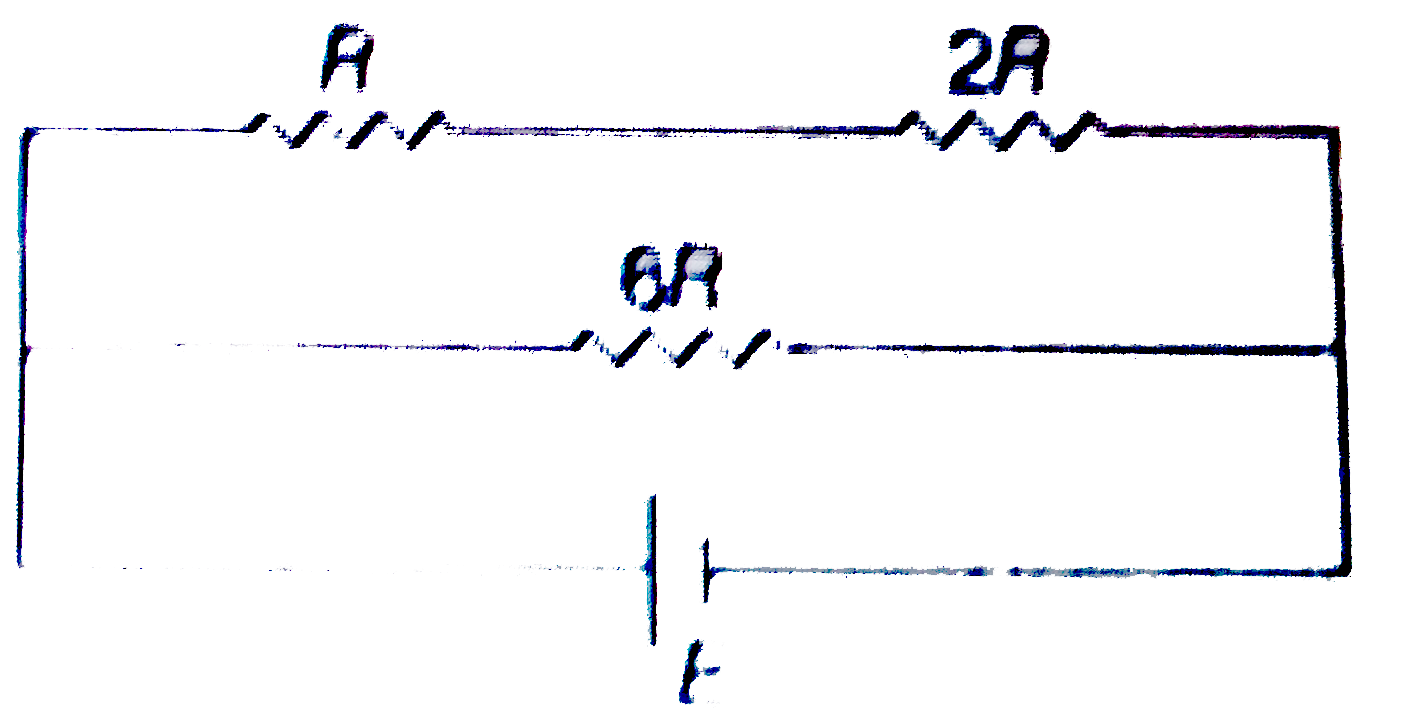Cell and battery
Step-by-Step Text Solution:
1. Definition of a Cell:
- A cell is defined as a single electrochemical unit that converts chemical energy into electrical energy. It is capable of producing electric current on its own.
2. Definition of a Battery:
- A battery, on the other hand, is a combination of two or more cells connected together. It serves the same function as a cell but provides a higher voltage and greater energy capacity due to the multiple cells working together.
3. Key Differences:
- Unit Composition:
- A cell is a singular unit.
- A battery consists of two or more cells.
- Functionality:
- A cell can function independently to produce electricity.
- A battery requires multiple cells to function, thus it cannot be a single unit.
4. Symbol Representation:
- The symbol for a cell is represented by two parallel lines (indicating a single unit).
- The symbol for a battery is represented by a series of cells connected together, indicating that it is made up of multiple cells.
5. Conclusion:
- In summary, while both cells and batteries are essential for producing electric current, the primary distinction lies in their composition and functionality. A cell is an individual unit, while a battery is a collection of cells.
- A cell is defined as a single electrochemical unit that converts chemical energy into electrical energy. It is capable of producing electric current on its own.
- A battery, on the other hand, is a combination of two or more cells connected together. It serves the same function as a cell but provides a higher voltage and greater energy capacity due to the multiple cells working together.
- Unit Composition:
- A cell is a singular unit.
- A battery consists of two or more cells.
- Functionality:
- A cell can function independently to produce electricity.
- A battery requires multiple cells to function, thus it cannot be a single unit.
- The symbol for a cell is represented by two parallel lines (indicating a single unit).
- The symbol for a battery is represented by a series of cells connected together, indicating that it is made up of multiple cells.
- In summary, while both cells and batteries are essential for producing electric current, the primary distinction lies in their composition and functionality. A cell is an individual unit, while a battery is a collection of cells.
Topper's Solved these Questions
- ELECTRICITY BOOK - ICSECHAPTER - ELECTRICITY EXERCISE - Exercises (Section II) Short answer questions
8 Videos
- ELECTRICITY BOOK - ICSECHAPTER - ELECTRICITY EXERCISE - Exercises (Section II) Long answer questions
8 Videos
- ELECTRICITY BOOK - ICSECHAPTER - ELECTRICITY EXERCISE - Exercises (Section II) Give reasons for the following
8 Videos
- ENERGYBOOK - ICSECHAPTER - ENERGYEXERCISE - THEME ASSIGNMENT
4 Videos
Similar Questions
A potentiometer circuit has been setup for finding. The internal resistance of a given cell. The main battery used a negligible internal resistance. The potentiometer wire itsefl is 4m long. When the resistance, R, connected across the given cell, has value of
(i) Infinity (ii)9.5Ω,
the 'balancing length' , on the potentiometer wire are found to be 3m and 2.85m, respectively.
The value of internal resistance of the cell is
View SolutionThe anodic half-cell of lead-acid battery is recharged using electricity of 6 Faraday. The amount of PbSo4 electrolyzed in moles during the process is__________.
View SolutionThe anodic half-cell of lead-acid battery is recharged using electricity of 0.05 Faraday. The amount of PbSO4 electrolyzed g during the process is: (Molar mass of PbSO4=gmol−1)
View SolutionThe anodic half-cell of lead-acid battery is recharged using electricity of 0.05 Faraday. The amount of PbSO4 electrolyzed in g during the process is : (Molar mass of PbSO4=303gmol−1)
View SolutionTwo ideal diodes are connected to a battery as shown in the circuit. The current supplied by the battery is
View SolutionTwo ideal diodes are connected to a battery as shown in the circuit. The current supplied by the battery is

View SolutionStatement I: Internal resistance of a battery is drawn parallel to a battery in electical circuit.
Statement II: Heat generated in a battery is due to internal resistance.
View SolutionWhat type of a battery is lead storage battery? Write the anode and cathode reactions and the overall cell reaction occurring in the operation of a lead storage battery.
(b) Calucluate the potential for half-cell containing.
0.10 M K2Cr2O7(aq),0.20MCr3+(aq)and1.0×10−4MH+(aq)
The half -cell reaction is
Cr2O2−7(aq)+4H+(aq)+6e−→2Cr3+(aq)+7H2O(l)
and the standard electron potential is given as Eo=1.33V.
View SolutionIn the figure both cells A and B are of equal emf. Find R for which potential difference across battery A will be zero, long time after the switch is closed. Internal resistance of batteries A and B (r1)and(r2) respectively(r1>r2).

View SolutionIn the circuit shown, total power supplied by an ideal battery is 80 W. if R=10Ω. Then EMF of the battery is

View Solution
